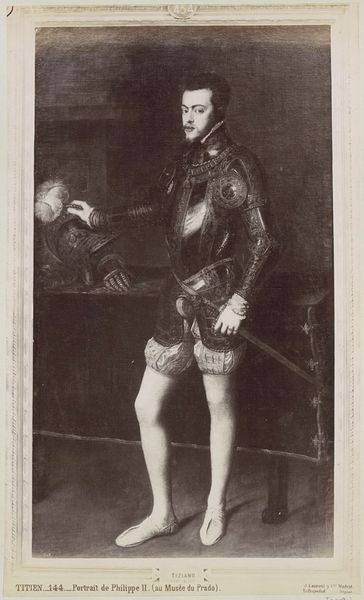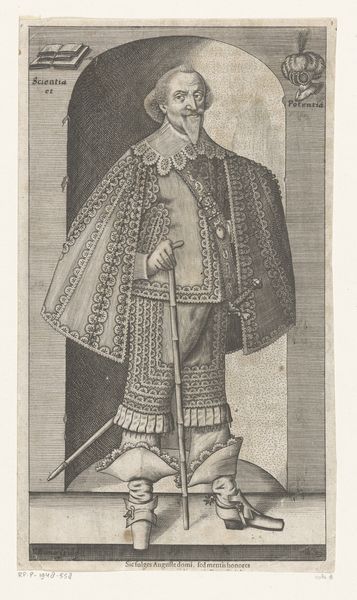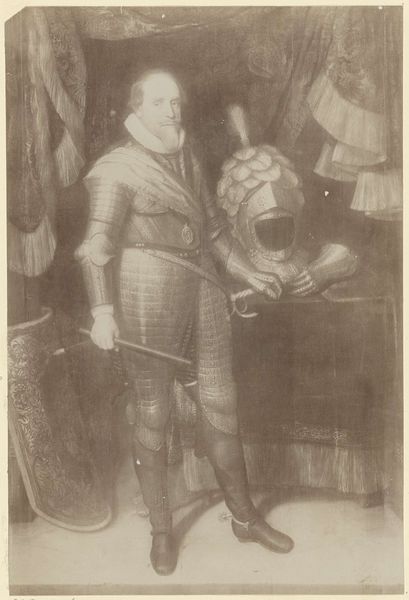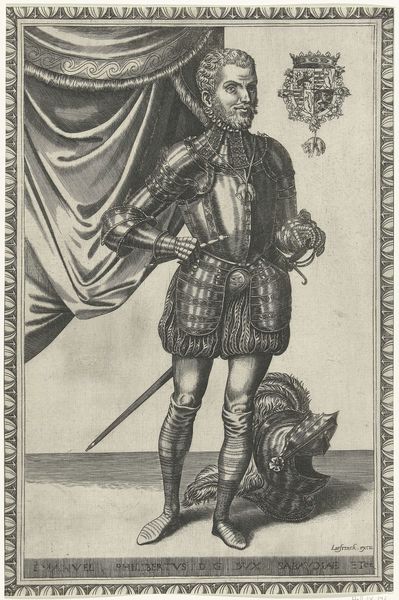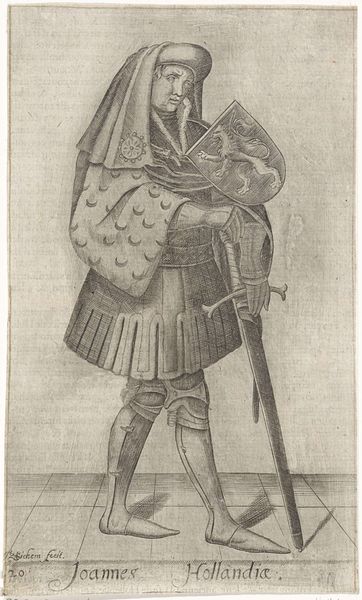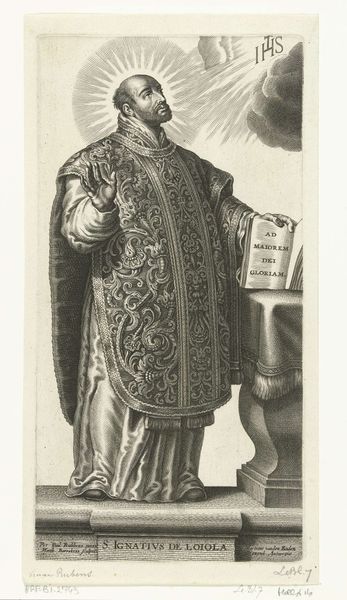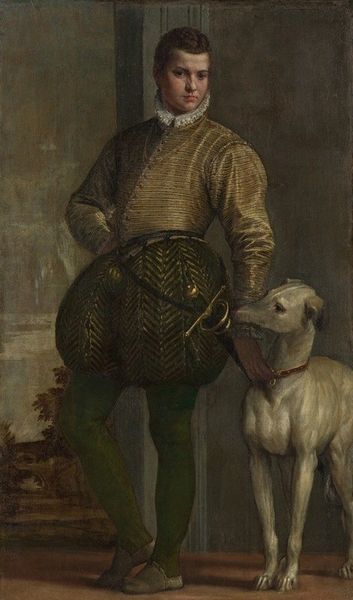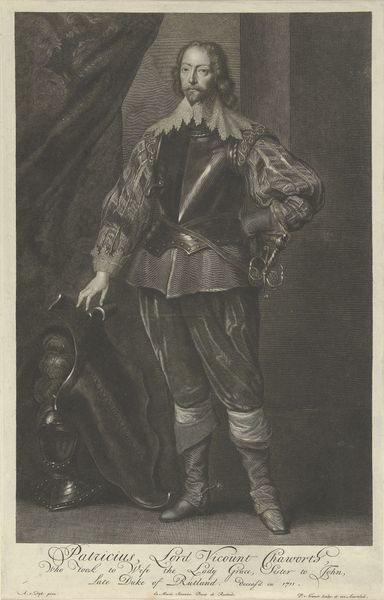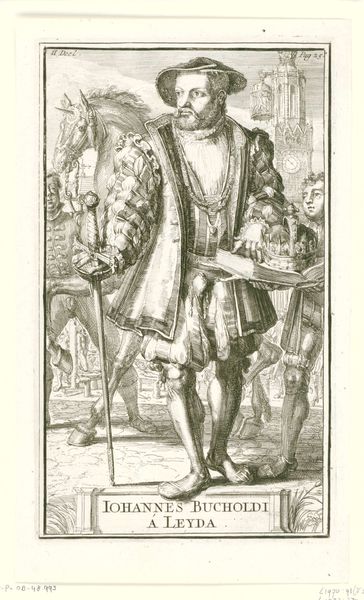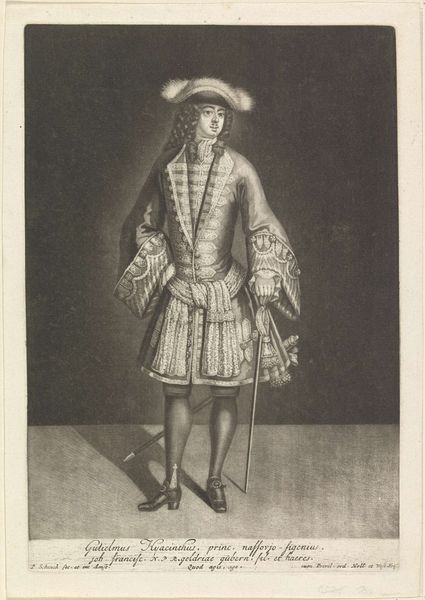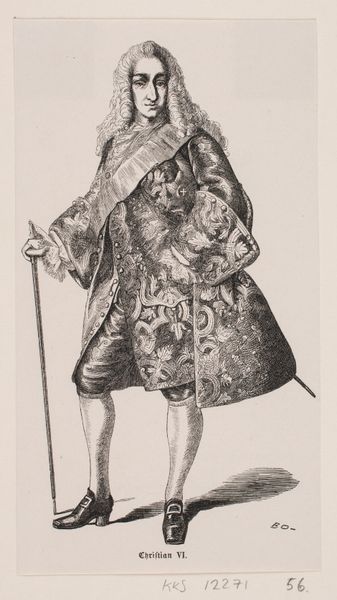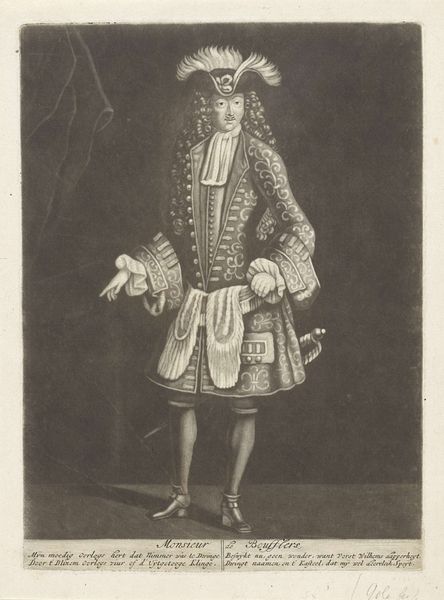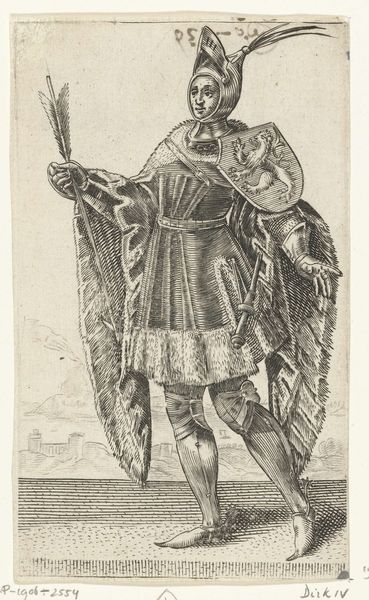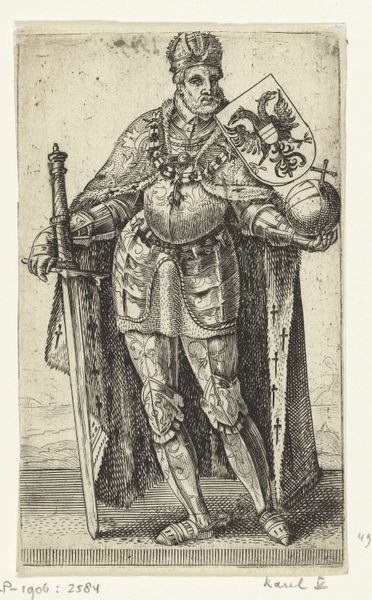
Fotoreproductie van een schilderij door Titiaan, voorstellend een portret van keizer Karel V met een jachthond c. 1857 - 1880
0:00
0:00
Dimensions: height 386 mm, width 230 mm
Copyright: Rijks Museum: Open Domain
This photograph by Juan Laurent captures Titian's painted portrait of Charles V with a hunting dog. Made in Spain, during the mid-19th century, it points to the rising status of photography in European cultural institutions. Laurent's photograph is a copy of a painting that, by then, had already become an iconic representation of power. The stern Emperor, portrayed with his loyal hound, embodies a very specific idea of masculinity and authority. Copies such as this one, made for mass distribution, tell us about the new technologies used by museums to disseminate their collections, and the rise of art history as a discipline. Photography allowed institutions to circulate their images and, therefore, their values, among wider audiences. To understand this image better, it is important to consider the history of photography in the 19th century, as well as the history of museums and art reproduction. Through such research, we can better understand the social and institutional contexts that shape the meaning of art.
Comments
No comments
Be the first to comment and join the conversation on the ultimate creative platform.
